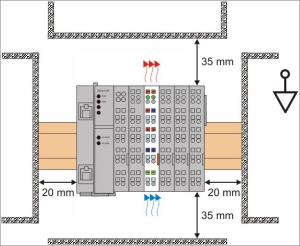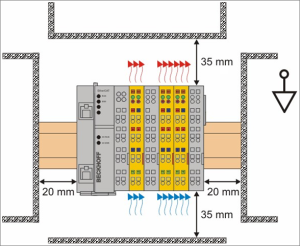Safety Operation
Environmental Conditions
Ensure that the safety components are only transported, stored, and operated under the specified conditions (see technical data)!
-
-
Risk of injury!
The safety components must not be used under these operating conditions:
- Under the influence of ionizing radiation (that exceeds the level of the natural environmental radiation).
- In corrosive environments.
- In an environment that leads to unacceptable soiling of the safety component.
-
-
Electromagnetic compatibility
The safety components comply with the current standards on electromagnetic compatibility with regard to spurious radiation and immunity to interference in particular.
However, in cases where devices such as mobile phones, radio equipment, transmitters or high-frequency systems that exceed the interference emissions limits specified in the standards are operated near safety components, the function of the safety components may be impaired.
Safety Instructions
Before installing and commissioning the safety components read the Safety Instructions.
-
-
Commissioning Test
Before the AKT2G-SDI-004-000/AKT2G-SDO-004-000 can be used for the safety task, the user must carry out a commissioning test so that sensor and actuator wiring errors can be ruled out.
Transport / Storage
Use the original packaging in which the components were delivered for transporting and storing the safety components.
-
-
Note the specified environmental conditions
Please ensure that the digital safety components are only transported and stored under the specified environmental conditions (see technical data).
Mechanical Installation
-
-
Risk of injury!
Bring the bus system into a safe, de-energized state before starting installation, disassembly or wiring of the devices!
-
-
Use ferrules with plastic collars
When using fine-wire cables for signal connections, use ferrules with plastic collars. This leads to a higher system availability when test pulses for the corresponding channels are switched off.
Control Cabinet / Terminal Box
The safety terminals must be installed in a control cabinet or terminal box with IP54 protection class according to IEC![]() "International Electrotechnical Commission"
IEC is a not-for-profit, non-governmental international standards organization that prepares and publishes International Standards for all electrical, electronic and related technologies 60529 as a minimum.
"International Electrotechnical Commission"
IEC is a not-for-profit, non-governmental international standards organization that prepares and publishes International Standards for all electrical, electronic and related technologies 60529 as a minimum.
Installation Position and Minimum Distances
For the prescribed installation position the mounting rail is installed horizontally and the mating surfaces of the terminals point toward the front (see illustration below). The terminals are ventilated from below, which enables optimum cooling of the electronics through convection. The direction indication “down” corresponds to the direction of positive acceleration due to gravity.
Figure 6-329: Installation position and minimum distances
To ensure optimum convection cooling, the distances to neighboring devices and to control cabinet walls must not be smaller than those shown in the diagram.
-
-
External heat sources / radiant heat / impaired convection
The maximum permissible ambient temperature of 55°C was checked with the above example configuration.
Impaired convection, an unfavorable location near heat sources or an unfavorable configuration of the EtherCAT ***EtherCAT is an open, high-performance Ethernet-based fieldbus system. The development goal of EtherCAT was to apply Ethernet to automation applications which require short data update times (also called cycle times) with low communication jitter (for synchronization purposes) and low hardware costs Terminals may result in overheating of the terminals.
***EtherCAT is an open, high-performance Ethernet-based fieldbus system. The development goal of EtherCAT was to apply Ethernet to automation applications which require short data update times (also called cycle times) with low communication jitter (for synchronization purposes) and low hardware costs Terminals may result in overheating of the terminals. The key parameter is always the maximum permitted internally measured temperature of 95°C, above which the safety terminals switch to safe state and report an error.
The internal temperature can be read from the safety components via CoE.








